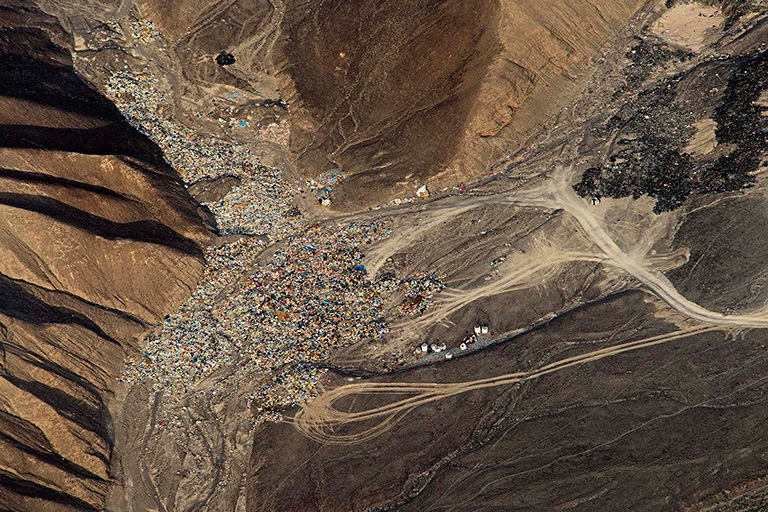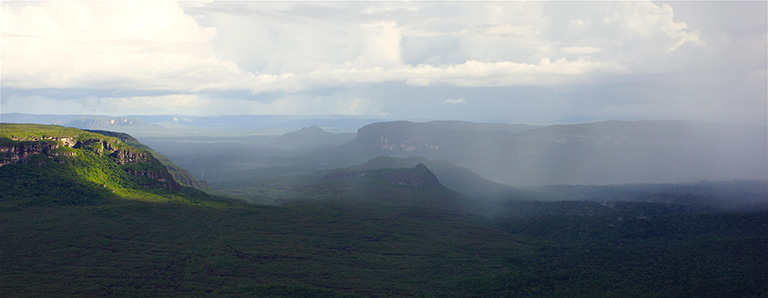- The coronavirus pandemic has sparked greater awareness of humanity’s role in creating conditions for infectious diseases to flourish by increasing interactions with pathogens through exploitation of wild animals and encroachment on their habitat, crowding into dense cities, and undermining the health of ecosystems that sustain us.
- Enrique G. Ortiz, Senior Program Director at the Andes Amazon Fund, argues that if we want to increase the resilience of the planet to future disasters, whether they be pandemics or damage wrought by climate change, we need to address two critical societal issues: population and consumption.
- Ortiz says that progress is possible in both areas. Population is expected to peak mid-century, but shifting consumption patterns will require profound changes in how we go about our lives.
- This post is a commentary. The views expressed are those of the author, not necessarily Mongabay.
We have come to realize that the origins of the coronavirus pandemic are directly related to how we treat the environment. The harmful acts of eating wild animals, denuding forests, and polluting nature create the conditions for infectious diseases to expand to global levels. In addition, most countries have shown a limited capacity to react when these occur, as we have seen with Covid-19.
The resilience of the planet is at risk, particularly when climate change is transforming the world for the species within. Furthermore, a looming economic crisis will only increase the pressure on natural resources. In response, we hear about all kinds of reactions, such as closing wet markets, increased concerns to protect forests, calls to reduce emissions, and many others. Although working towards all these potential solutions is good for the environment, we seem to be leaving aside two causal elements that are more fundamental. Perhaps, the mother of all issues. These are population pressure, and hyper consumption.
We are too many in the world, highly concentrated in cities, and related to it, we have grown accustomed to an insatiable thirst for consumption. Are not those the issues in which we rather should “reset” our society, our own community, and ourselves? We have had significant progress in slowing down population growth but are behind in doing so on consumption rates. Let’s explore both issues, population and consumption more in detail:

Population pressure
When I was born – some 60 years ago, we were less than 3 billion people on the planet. Today, we are more than 7.8 billion. As a way to illustrate how the planet’s condition has changed, I think of Peru, my birth country. Back then, there were around 9 million Peruvians. Today there are more than 32 million. In those years, the population density was less than 8 people per km2 and today it is 25. At the end of the 1950s, 70% of the Peruvian population was rural. Today, it is mostly urban with only about 20% living outside cities, and strongly concentrated in a few of them. This scenario is unfortunately typical for most developing countries.
The good news is that the global population growth rate, and also that of Peru, has been reduced to less than half of what it was when I was born (today it is around 1%). Obviously, we can’t go back to be less people, but we can keep lowering its growth, and also distribute ourselves better. We should not leave population reductions to catastrophic events, like how the Spanish flu did a century ago killing between 20 and 100 million people, mostly at reproductive age between 20-40 years old, and more than 98% of them in urban areas.
Our progress in this issue shows that we can revert big trends. But, even at current numbers, the pressure on natural resources is high, and it relates to the second point.


Hyper consumption
Regardless of the political line or the economic model—from Cuba to China to the United States to India—we are all prey to an unrelenting consumerism. Should we change everything we have because something that “we like more” appeared?
Do we need to eat that much meat? Today 60% of the world’s animal biomass is from animals raised mainly to supply us with meat.
We live in a world of “artificial abundance,” where we don’t know where things come from, or what is required to produce them. Neither do we realize the real impact consumerism has on our lives… and on the planet. This “hyper consumption” increases the production of non-degradable materials that kill turtles in the oceans and fattens us up with 5 to 7 grams of microplastics in our bodies per week (that is, we eat them). Curiously, the equivalent of a credit card. It is simply unsustainable.


The path ahead
The good part on these matters is that we have a choice. Although it is a wakeup call, I wish the protests we saw last year by younger generations included changing their own behavior, instead of focusing blame on older generations – Greta-style. The younger age cohorts are by far the main source of demand and market for mostly useless goodies. That is a change they can achieve now which would have long lasting impacts, well into when they become the “old ones”.
We have to realize that relying on semi-green palliatives (veganism, green energy, certified products, recycling, etc.) is not working at a relevant level yet, but mainly as a feel-good attitude. By understanding that everything we consume has an impact, by realizing that we do not need a huge urban living space, or the many unnecessary things in our lives, we may have a significant reduction of our footprint in the planet. That being: an engineer or lawyer should not mean a better life than that of a person who works with his or her hands. That it can be just as fulfilling -or more, to enjoy the local and national protected areas or natural spaces, than spending the holidays in Paris or Disneyland.
Will this painful experience of the pandemics be enough to make us change? I doubt it, but I do have faith in a promising younger generation. I envision the day when using a plastic bag will only an act of extreme necessity, otherwise one of shame. A generational reaction beyond an occasional march or a no-school Friday.
This momentary “breath”, with clean rivers and wildlife crossing the streets in cities, is soon to be over. Someone wrote that “the world economy is collapsing because we are consuming only what we need”. Less is the new Better.

"consumption" - Google News
July 21, 2020 at 12:18AM
https://ift.tt/30s3uAA
Population and consumption: challenges we can win (commentary) - Mongabay.com
"consumption" - Google News
https://ift.tt/2WkKCBC
https://ift.tt/2YCP29R
Bagikan Berita Ini














0 Response to "Population and consumption: challenges we can win (commentary) - Mongabay.com"
Post a Comment